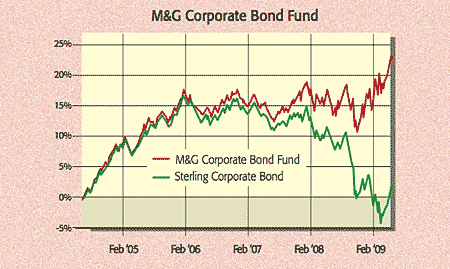
Fast becoming this recession’s must-have investment, corporate bond funds have been flying off the shelves. During April, £683.7m was invested, the sixth month in a row that corporate bonds have been the most popular asset class among retail investors.
The reasons are simple: until recently many other asset classes were tanking. And with the base rate at 0.5%, the returns on cash have been paltry. By contrast, corporate bonds offer a decent income and are relatively low risk. But are they still a buy?
The safest investment grade bonds (with at least a Baa/BBB rating from Moody’s) offer yields of 5% to 7%, says Gerard Klingman, a financial adviser for Raymond James in Forbes. Ten-year Treasuries yield around 3.5%. That gap (or ‘spread’) is historically high. To many, that’s a strong buy signal because it indicates that corporate bonds are cheap relative to government bonds. At these spreads, the market is pricing in a default rate on investment-grade bonds of more than 30% over five years.
Yet even in the Great Depression, the default rate never hit 5% over any five-year period, says Mark Dampier of Hargreaves Lansdown in The Independent. “This suggests bonds are being valued far too cheaply and there are excellent bargains out there.” Since 1983, according to Schroders, high-yielding (riskier) corporate bonds offered an annualised excess return over cash during a recession of 11.6% with volatility of 8.5%. Equities managed a 9.9% return since 1950, but with volatility of 14.6%. So you get more bang for your buck with less risk.
But there’s a nagging problem. In absolute terms a 5% to 7% yield on corporate bonds isn’t historically high. So the yield gap must in part reflect poor yields on government bonds as central banks have dropped rates and printed money to drive down the cost of borrowing. That means corporate bond yields may not fully reflect the mounting risk of firms defaulting.
For the second half of 2009, HSBC says this risk is “huge” as firms haven’t “been through a full business cycle since demand fell of a cliff at the end of last year”. General Motors bond-holders would agree: they seem destined to end up with just nine cents for every dollar invested. We’d avoid individual bonds and high-yield funds. Try an investment-grade bond fund such as M&G’s Corporate Bond Fund (0800-328 3196), yielding around 5.9% and up 7.4% since last June.